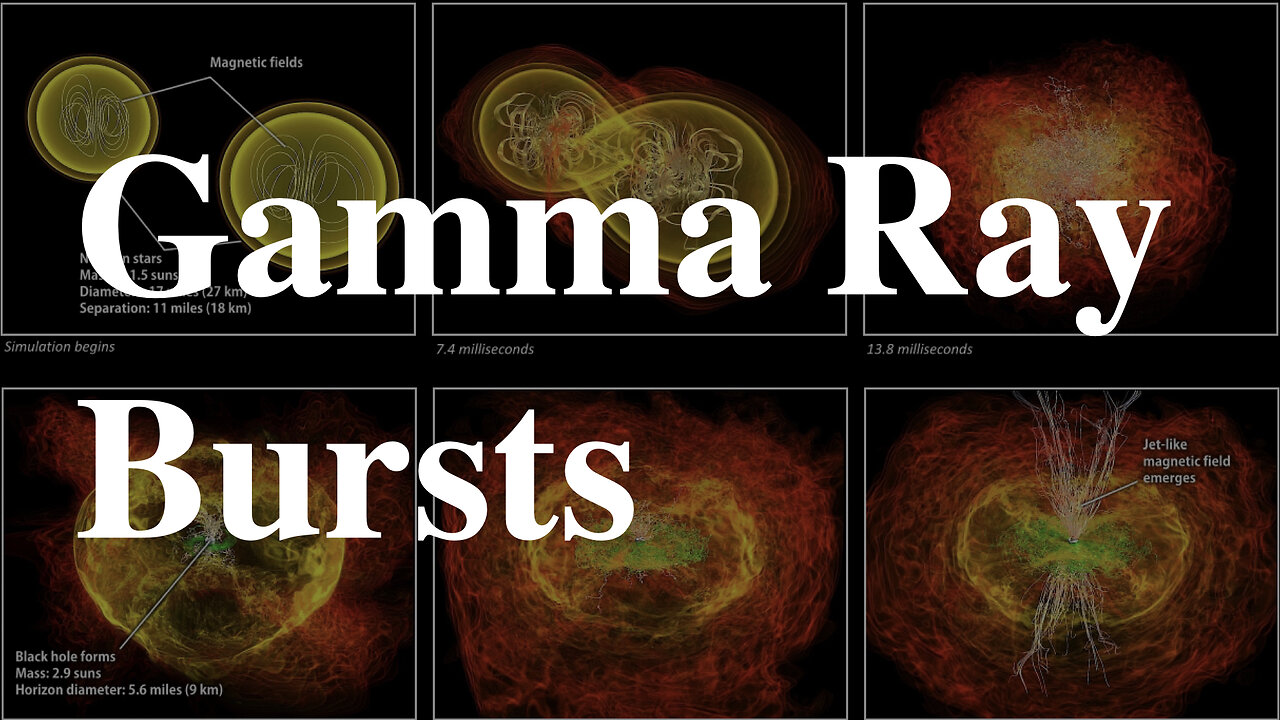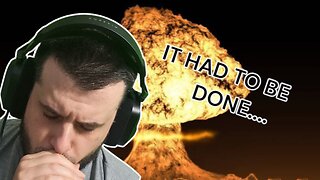Premium Only Content

Unlocking the Secrets of Gamma Ray Bursts: Cosmic Explosions Revealed!
What you are about to experience is a profound exploration of the extraordinary phenomena known as gamma ray bursts (GRBs). These events represent some of the most massive stellar explosions in the universe, specifically associated with the creation of black holes. Our focus will be on supermassive stars, which exceed 15 or 20 times the mass of our Sun and can culminate in type I supernovae, subsequently collapsing into black holes.
To comprehend the significance of gamma ray bursts, we must first explore the historical context in which they were discovered. The initial quest for gamma rays began in the 1960s during the Cold War. The United States, monitoring nuclear tests conducted by the Soviet Union, launched the Vela satellites. These satellites were designed to detect gamma rays emanating from nuclear explosions but serendipitously identified gamma ray bursts that did not match any nuclear signatures. This revelation shifted the focus from Earthly activities to the cosmos, propelling the emergence of gamma ray astronomy.
The field of gamma ray astronomy remained dormant until the launch of the Compton Gamma Ray Observatory in 1991, which included the Burst and Transient Source Experiment (BATSE). This instrument recorded thousands of gamma ray bursts, revealing their isotropic distribution across the sky—an indication of their cosmic origins. A significant breakthrough occurred in 1997 with the BeppoSAX satellite, which identified the first afterglow of a gamma ray burst in X-rays, subsequently observed in visible light by ground-based telescopes. This evidence confirmed that gamma ray bursts originate from distant galaxies, billions of light years away.
In 2004, the launch of the Swift Gamma Ray Burst Mission revolutionized the study of these cosmic events. Swift’s ability to rapidly adjust its orientation allowed it to capture afterglows in multiple wavelengths, which provided precise locations for further investigation. To date, Swift has observed over a thousand gamma ray bursts, cementing their status as monumental cosmic phenomena.
We will also delve into the prevailing theories that explain these bursts, particularly the hypernova model, which describes the explosion of supermassive stars leading to black hole formation. This process involves the formation of an accretion disk and a jet that emits gamma rays as it pierces through the star. Notable observations, such as those captured by the Hubble Space Telescope, link long-duration gamma ray bursts to star-forming regions in distant galaxies, emphasizing the cataclysmic events that foster black hole formation.
Lastly, we shall examine neutron star collisions as an additional source of gamma ray bursts, with the 2017 collision providing direct evidence that corroborated existing theoretical models. Join me in this exploration of the physics underlying gamma ray bursts, supernovae, and black hole formation, as we unveil the dramatic events that shape our universe.
-
 1:43:56
1:43:56
Tundra Tactical
12 hours ago $42.91 earned🛑LIVE NOW!! FBI Gets Caught LYING About Good Guys With Guns For 10 YEARS!!!!
63.3K7 -
 2:12:01
2:12:01
BlackDiamondGunsandGear
2 days agoAFTER HOURS ARMORY / Antifa / Lies/ Prison time
38.3K2 -
 2:12:00
2:12:00
DLDAfterDark
11 hours ago $17.56 earnedThe After Hours Armory! Tonight is The Chat's Chat! God, Guns, and Gear!
51.6K6 -
 3:32:18
3:32:18
Mally_Mouse
14 hours ago🌶️ 🥵Spicy BITE Saturday!! 🥵🌶️- Let's Play: Phasmophobia
57.8K5 -
 1:13:19
1:13:19
iCkEdMeL
10 hours ago $24.05 earnedChaos Explodes in Chicago & Portland | Feds Clash with Protesters!
60.7K33 -
 21:54
21:54
Exploring With Nug
1 day ago $11.06 earnedScuba Diving Missing Person Search Leads to Discovery of Classic Cars!
69.5K20 -
 8:06:32
8:06:32
Phyxicx
15 hours agoStar Wars: Movie Battles II Community Event hosted by ReaperAF95 - 10/4/2025
35.1K -
 1:19:51
1:19:51
World2Briggs
13 hours ago $2.84 earnedThe US This Week
38.5K8 -
 2:31:13
2:31:13
Joker Effect
10 hours ago"MAKE STREAMING GREAT AGAIN" - Brands Step Up Finally. Birth of Rumble Community. Taking Leadership
24.1K4 -
 5:02:17
5:02:17
Illyes Jr Gaming
14 hours ago"Machine Gun" Takes On BLACK OPS 7 Beta DAY 3!!!
15K1
